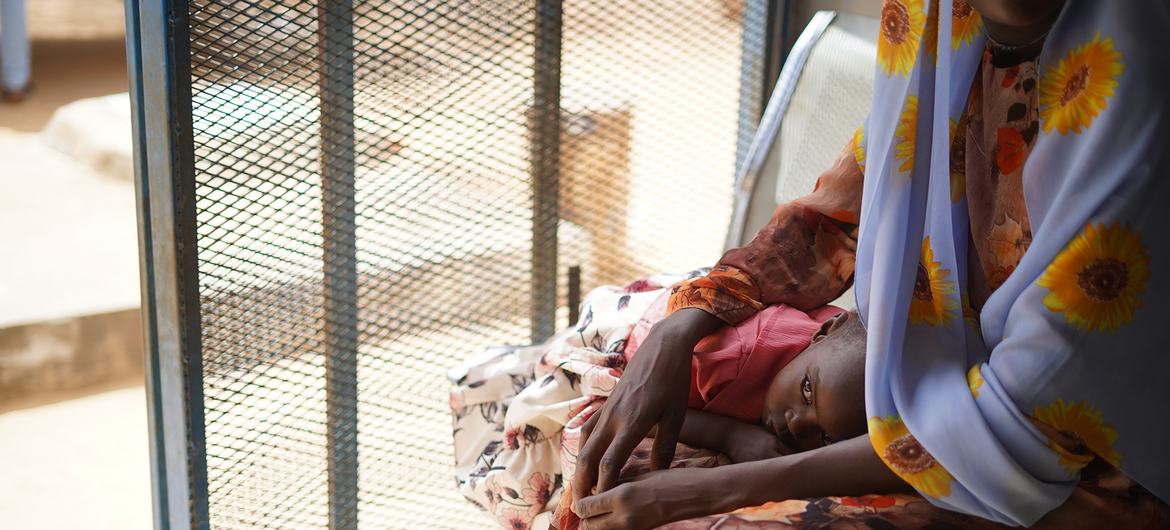
Restructuring Sudan’s Health System Amid War
Toward Strengthening Primary Health Care and Dismantling Centralized Treatment
By Loay Omar Al-Raih (Physician)
Summary
The war that has ravaged Sudan since April 2023 has caused a massive collapse of the health system, especially in the capital, Khartoum, which historically served as the hub for advanced medical services. Yet this humanitarian catastrophe has also revealed a historic opportunity to restructure the health system on fairer and more decentralized foundations. This paper presents a strategic vision for post-war reform, focusing on strengthening primary health care and empowering the states, drawing lessons from countries like Yemen, Syria, and Afghanistan, which rebuilt their health systems amid conflict.
Introduction
Before the conflict erupted, Sudan’s health system suffered from excessive concentration in Khartoum, which hosted around 65% of specialized hospitals and referral centers. Other states had chronically weak health infrastructure, relying almost entirely on patient referrals to the capital. When war broke out, Khartoum’s health infrastructure was devastated: 70–80% of its health facilities were destroyed, shut down, or looted, while around 45% of health facilities in other states were also affected. Amid this collapse, a new reality began to emerge — one that restored the importance of primary health care centers and created opportunities for more comprehensive and balanced structural reform.
Methodology
This paper uses qualitative analysis combining a review of literature on health in fragile contexts, analysis of international and national organization reports on Sudan’s health situation since the war began, and study of countries that experienced prolonged conflicts and rebuilt their health systems based on decentralized and community-driven models.
Results and Analysis
Collapse as an Opportunity for Redirection
In 2023, there were 257 documented attacks on health care facilities in Sudan, compared to only 54 in 2022, according to WHO and Insecurity Insight. During the first half of 2025, 38 attacks were recorded, killing 933 people — including children — and injuring another 148.
This collapse has led to:
Increased reliance on primary health care centers, after 80% of facilities in affected areas ceased operating.
The emergence of alternative health networks overseen by local authorities and organizations such as Médecins Sans Frontières (MSF) and the Red Crescent.
Community-based, improvised methods of patient transport and emergency care in the absence of ambulances.
A return to primary care as a strategic and lifesaving option, inspired by the Alma-Ata Declaration (1978) and the Astana Declaration (2018).
Lessons from Other Countries
Afghanistan: Delegating primary health care management to provinces increased vaccination coverage by 57% and reduced child mortality by 28% (Newbrander et al., 2014).
Yemen: International support for primary care allowed 70% of services to continue despite the shutdown of major hospitals (Conflict and Health, 2021).
Syria: The state’s absence between 2013 and 2018 led to the emergence of a flexible community-based health system funded by the diaspora and NGOs (Kherallah et al., 2012).
Dismantling Health Centralization as a Survival Strategy
Sudan’s excessive health centralization was one of its greatest weaknesses. With Khartoum out of commission, the states have had to:
Take on responsibilities for hiring, resource distribution, and regulating medicines locally.
Launch ambulance units and mobile clinics through local and international partnerships.
Studies have shown that decentralization improves the effectiveness of health systems in fragile states by closing gaps and enhancing responsiveness (WHO, 2023).
Discussion: Does the Crisis Represent a Chance for Rebuilding?
Despite the vast destruction, the crisis has opened the door to long-overdue reforms, such as:
Freeing the system from previous structural stagnation and breaking reliance on centralized facilities.
Establishing more flexible and decentralized models, including mobile clinics and community-based health networks.
Strengthening community participation in health, consistent with modern recommendations for “health responses in conflict settings.”
However, these changes are neither automatic nor guaranteed. They require:
Direct funding for primary health care to bridge major resource gaps.
Rapid, localized training of health workers to replace those lost to migration and displacement.
Genuine devolution of authority to the states to manage health systems, while building their technical and administrative capacities.
Conclusion
Despite the enormous suffering, the current war has created an opportunity to rebuild Sudan’s health system on fairer and more efficient foundations. The crisis has proven the necessity of strengthening primary health care, dismantling centralized treatment, and expanding the powers of the states to achieve a resilient, balanced health system serving all regions of Sudan. Making this transformation permanent will require serious political leadership, sustainable international funding, and a clear vision for the post-conflict phase.

